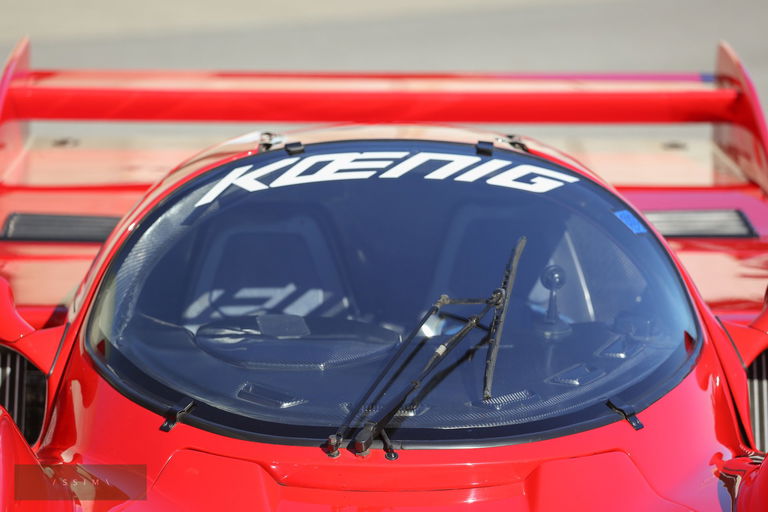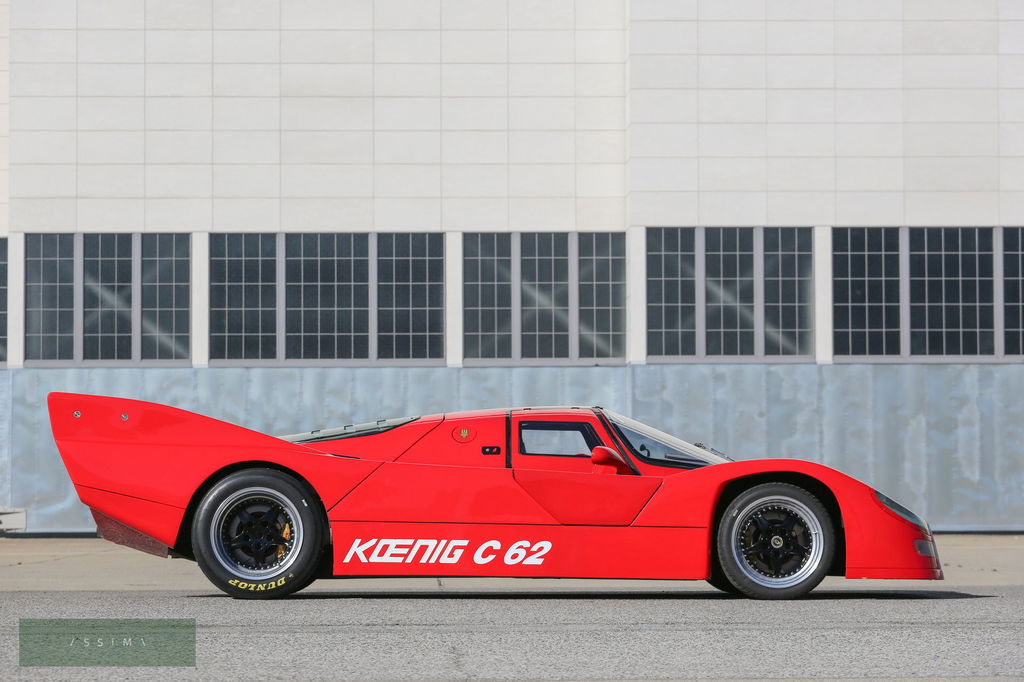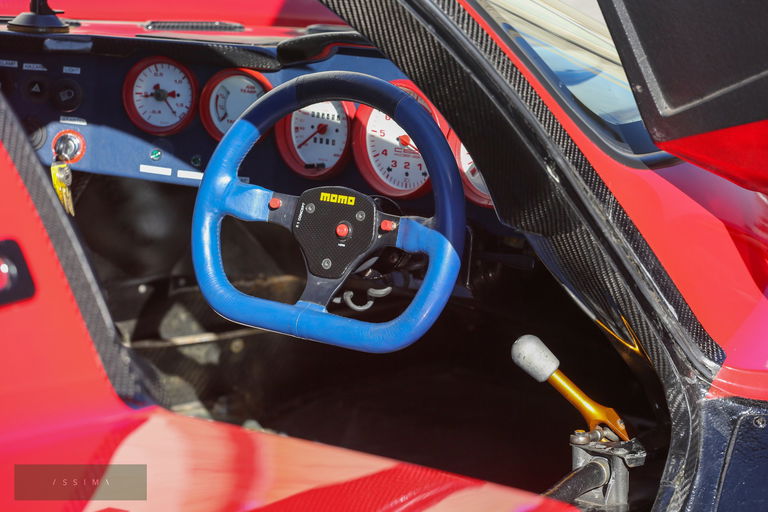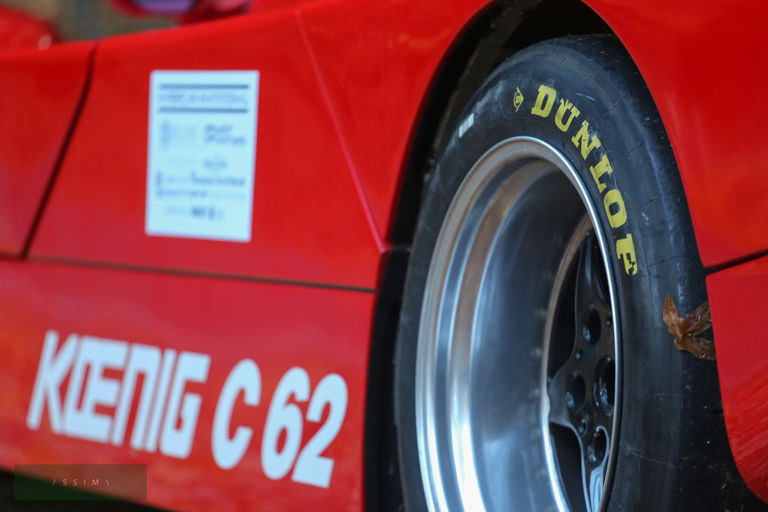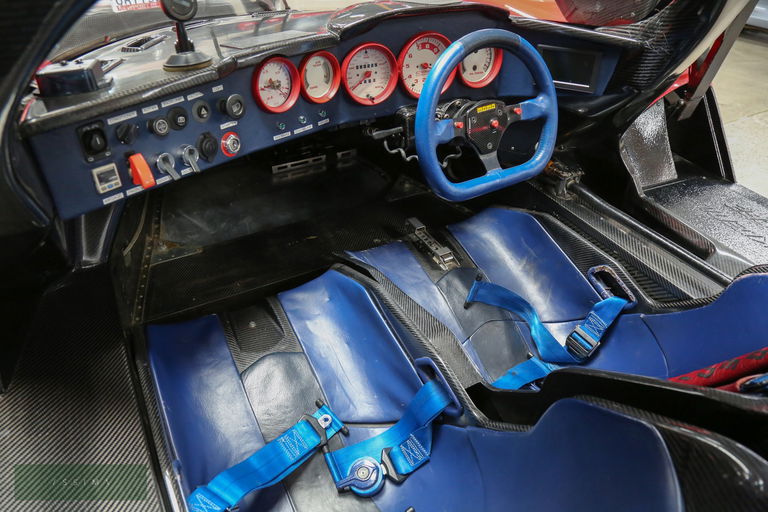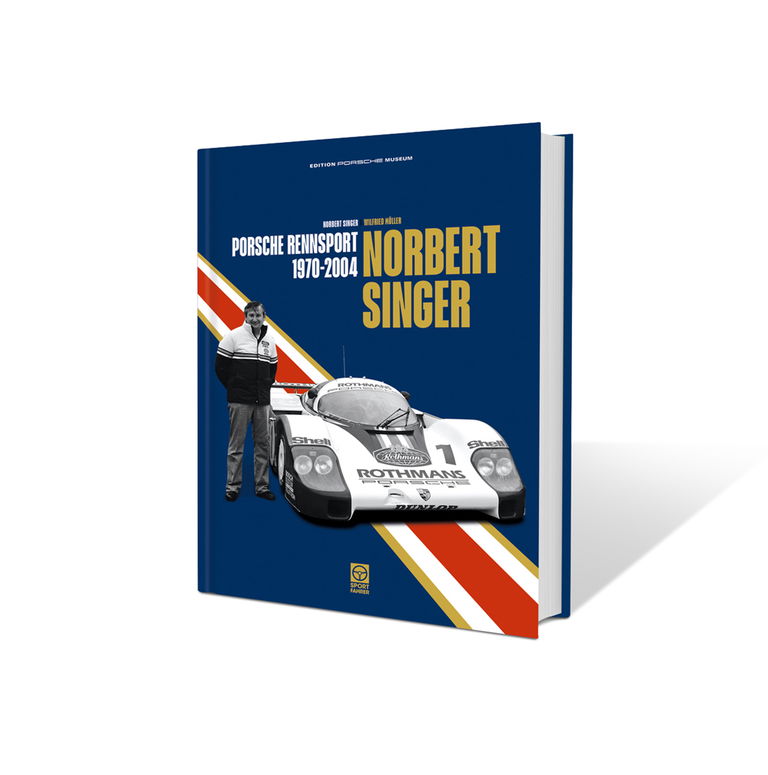The supercar craze was well underway by this point, with the F40 and 959 established as some of the most desirable cars on earth, together with exciting upcoming cars from Jaguar and Bugatti. With that background in place, several enterprising companies set out to convert 962s for street use. The first of these was Koenig Specials, which earned a top spot in the pantheon of outrageous 1980s tuners for their turbocharged widebody creations, based on the most prestigious cars of the era from Ferrari, Porsche, Lamborghini, BMW, and Mercedes.
Based in Munich, Koenig had previously raced a 962 and did not simply slap lights and license plates on the race car. Instead, they comprehensively re-engineering the 962’s architecture to make it more suited (or perhaps less unsuited) to street use to create the C62. The car bears strong visual resemblance to the 962 but in fact no body panels are shared or interchangeable. To meet German regulations, the headlights and fenders were raised and the underfloor redesigned to provide aerodynamic balance to offset the revised fenders. An opening front compartment and plexiglas engine lid were added for regular light maintenance, replacing the completely removable clamshells of the race cars, although the rear clamshell can still be removed on the C62 for heavy service as well.
Mechanically, the engine is a twin-turbocharged intercooled 911 engine displacing 3.4 liters and retaining 2-valve air-cooled heads and running Motronic fuel-injection and individual throttle bodies. It is an impressively tractable and sweet-tempered engine, and equipped with full exhaust, it produced a dyno-verified 550hp at the wheels in 2019 with a conservative boost limit (1.0 bar) and full exhaust system including catalytic converters. Koenig significantly revised the suspension with softer springs and dampers, but retained the factory 962 brakes, albeit with more street-oriented pads.
Koenig planned to build thirty C62s, but ultimately just three examples were built of the 1.8 million Deutsch mark C62 (about $1,030,000 USD at the time). Per recent correspondence with Oliver Koenig, this particular car is the second of the three cars they made. Koenig purchased this chassis new from Thompson (one of several entities which built their own chassis to improve crashworthiness and rigidity of the factory tubs) in March of 1990, completed the car in July of 1991, and sold it to a Japanese owner in August of 1991. The car spent its life in Japan in the hands of a few collectors until its current owner purchased it and imported it to the United States in 2019.
The car saw very little use in Japan and is understood to have fewer than 5,000km from new, an impression supported by the experts who have examined the car since its arrival in the United States. Since summer 2019 when the car arrived in California from Japan, the car has been thoroughly serviced and covered more than 1,000 kilometers, during which time it has proven to be remarkably trouble-free and reliable. Maintenance performed during this period included new tires, replacing the driver’s side tie rod, an alignment, oil change, new spark plugs, fresh brake fluid, new door struts, fixing miscellaneous leaks, adjusting the brakes, and running the car on the dyno.
Cosmetically, the car is unrestored and makes a stunning visual impression. The paint is glossy and was applied to nice race car standards, with close inspection revealing some stress cracks in the paintwork, chipping in the splash areas behind the wheels, and some scrapes to the front spoiler, which is a separate piece like that of a Ferrari Testarossa or modern Porsche GT3. The bodywork is composite kevlar but finished to high standards with smooth surfacing throughout. The wheels are in excellent shape and reveal purposeful billet racing calipers anodized in gold with red Brembo script. The lights and glazing are generally excellent aside from a small crack at the edge of the right headlight cover. The car has HID headlights which are extremely effective, as well as functioning turn indicators and reverse lamps.
Inside the car, the composite tub is displayed extensively, and the interior is devoid of upholstery including carpets other than leather on the dash fascia and thin leather cushions on the carbon fiber seats. A period looking set of analog Porsche instruments with white faces, red indications and Koenig C62 labels provide driver information including a dedicated boost gauge. The gauges have red leather rims, which have a few worn areas as do the leather harness aperture trims on the seats. A flat-bottomed quick release steering wheel is trimmed in blue leather to match the seats and dash fascia and also has controls for the horns and turn indicators. Carbon fiber trim covers the top of the dashboard and A-pillars, although the finish on the latter has some scratches. The car uses a pneumatically assisted clutch and door latches, which are driven by a compressor mounted in the left side pod. There is an air gauge indicating the pressure in the air tank for the pneumatic system on the dashboard, together with two rows of switches for miscellaneous systems, including the electric mirrors and air conditioning, which the car’s owner reports is functional.
Unlike the original 962, this car has hinged, opening front and rear panels so it isn’t necessary to remove the clam shells to access the mechanical systems for light maintenance. The rear clam shell can also be removed, displaying the entire engine, transaxle, suspension, and both turbos, which are mounted in the side pods just behind the twin intercoolers. The engine compartment and chassis are in tidy unrestored condition.
The car runs and drives well, with remarkable consistency and reliability for such an exotic piece of machinery. The starting sequence includes the master electrical switch as well as switches for the air compressor and power clutch, giving an airplane-like sense of occasion to starting the car. It starts easily and the motor idles smoothly with a friendly, streetable character that helps offset some of the uncompromisingly racy other aspects of the car. The pneumatically assisted clutch requires some time to familiarize with and isn’t the most progressive, although it is far more accommodating than a pure race clutch and the temperament of the motor helps offset this. The gear gates are closely spaced and the car employs a dogleg pattern with short throws and a hefty, mechanical shifter feel. It rewards technique and decisiveness, and definitely has a learning curve associated with it. Brakes have good bite regardless of temperature, another street-friendly attribute which helps make the car more usable in the street environment. Forward visibility is excellent, while rearward is poor and the rear mounted camera with dashboard display that serves as the rear view mirror (there is no rear window) is a godsend. From the outside, the car is quiet thanks to the catalytic converters and large mufflers, but it is quite loud inside. The engine noise is substantial, and is accompanied by a full complement of turbo and wastegate noises that make for an epic aural experience. The engine makes reasonable power off boost and is explosive on boost, a sensation heightened by how close the occupants are sitting to the tarmac. The gearing is tall (a necessity given the car’s top speed) and they operate quietly and are obviously not straight cut. The softened spring and damper rates compared to the race car make the ride reasonable all things considered, although the lack of rubber bushes in the suspension mean that expansion joints and other pavement imperfections are very present in the car when underway. Handling is benign and aside from the car’s width, it’s surprisingly enjoyable and benign to hustle on B-roads once the driver has adjusted to the various functional idiosyncrasies associated with driving a Group C car on the street.
Everything about this car is an experience. As a street car, it is intimidating, intense, and impractical. It is impossible to ignore and undoubtedly attracts more attention than just about anything else could, both from enthusiasts and the uninitiated. Observations from those who have experienced the car in motion include “it makes a Countach feel like a Golf” and “I think they forgot to do the street conversion.” As an automotive artifact, the C62 is equally noteworthy. Perhaps the purest and most intense monument to the supercar craze, the car is literally a race car for the road and has all the legendary ingredients of an appreciating and collectible icon: obscene performance and looks, genuine competition heritage, extreme rarity, and an unmatched experience. Couple that with surprisingly easy serviceability thanks to the amount of conventional Porsche components in the car and robust support for the racing 956s and 962s which are still actively campaigned, and it is actually a remarkably good value as well.




